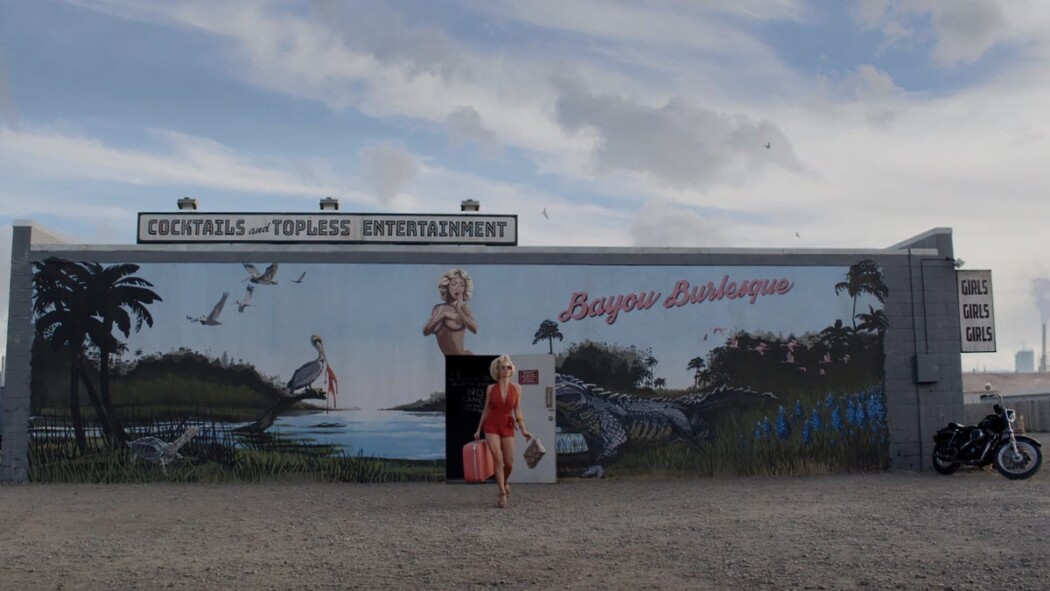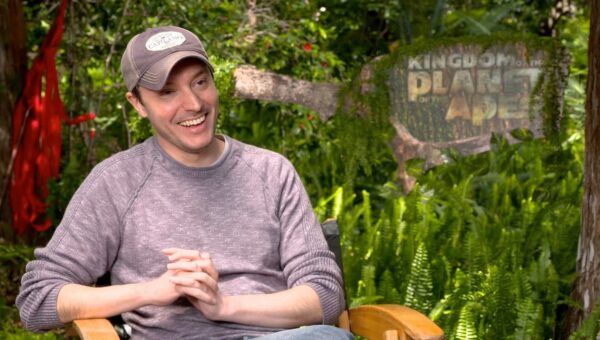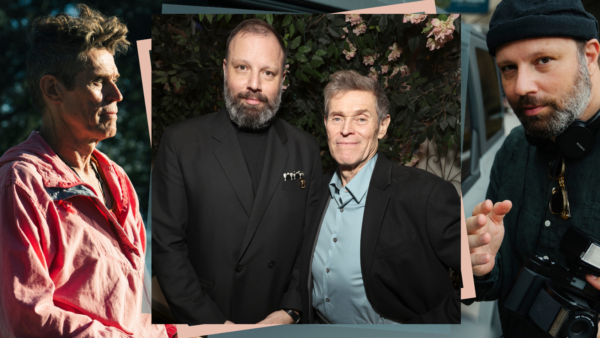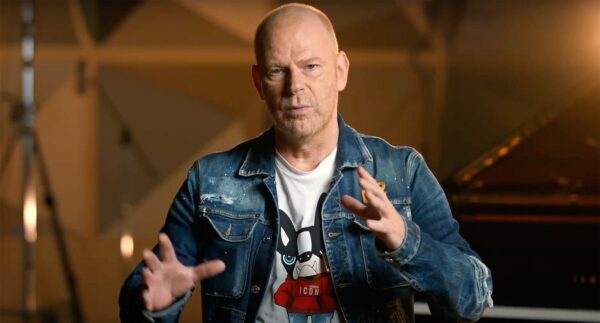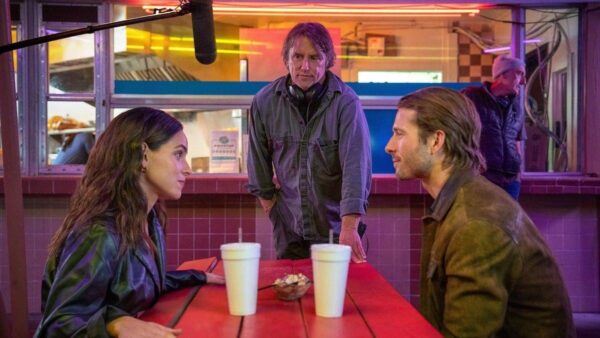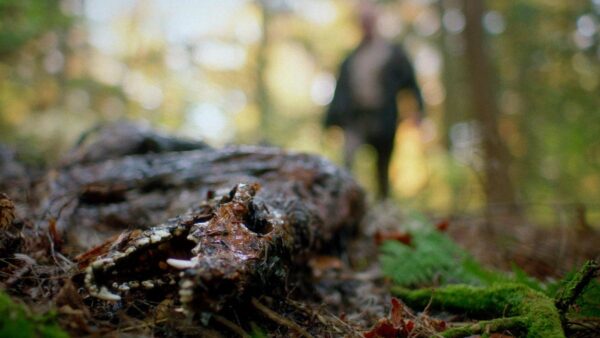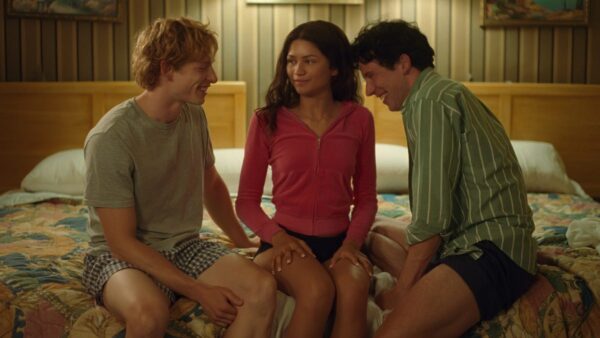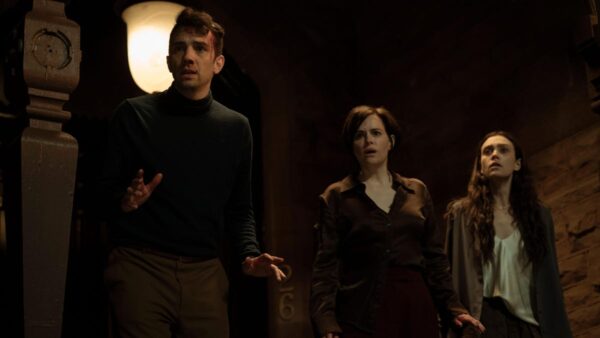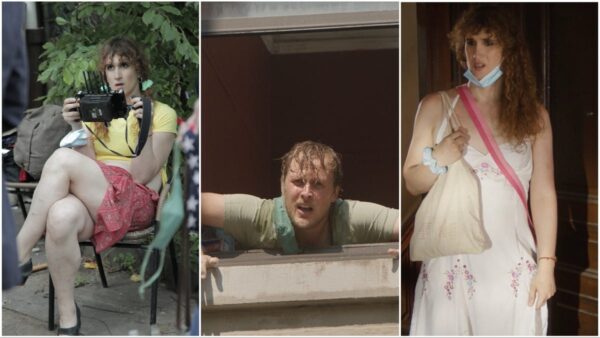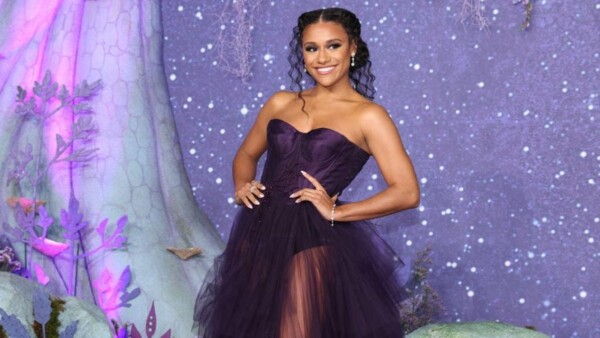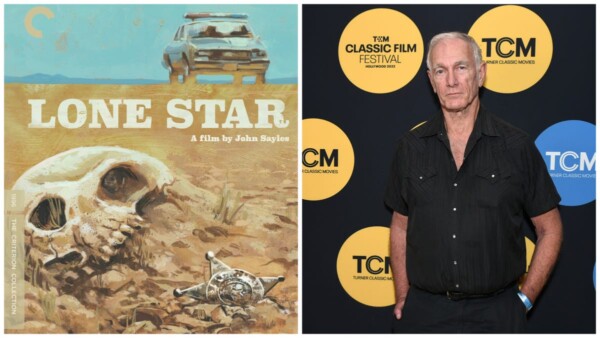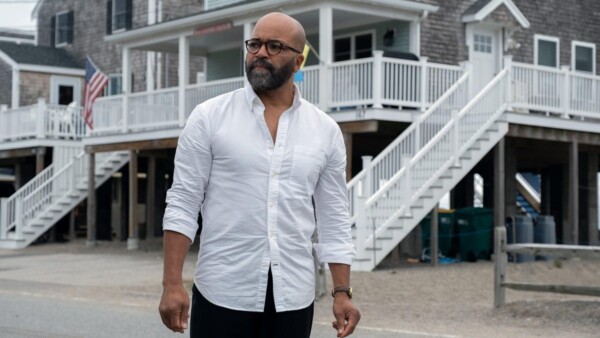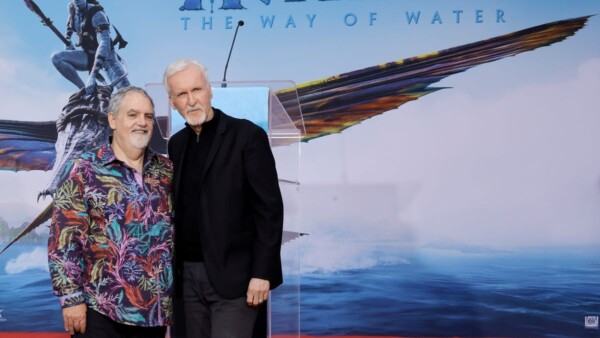Filmmaker Mike Rianda is just as effusive, warm, and beaming with contagious enthusiasm as his debut feature, the Oscar-nominated The Mitchells Vs. The Machines. References, bits, and digressions fly out of him at a mile a minute, like one of Katie Mitchell’s YouTube creations.
This all makes sense. The movie’s central, dysfunctional family unit was based, in part, on his own. He even plays younger brother Aaron Mitchell, who shares his childhood habit for friend-making via calling people at random to talk about Sega Dreamcast.
But Rianda maintains that he is “wildly in almost all of the characters.” A little Katie (Abbi Jacobson). A little Linda (Maya Rudolf). Rick (Danny McBride) is based on his dad, who, like the computer-generated patriarch, “lovingly” told him to have a backup plan. He didn’t, but it worked out.
Rianda’s innovative animated film contains all the messiness, dysfunction, and humanity of the Mitchell family. It is what makes The Mitchells Vs. The Machines one of the most surprising and relentlessly funny movies of 2021. The A.V. Club spoke with Rianda by Zoom to break down the many disparate pieces that make the movie a cohesive whole.
The A.V. Club: So how does it feel to be nominated for an Oscar for your first movie?
Mike Rianda: Oh my god, it’s amazing. Literally, my voice is hoarse from scream-complimenting Joachim Trier, director of Worst Person In The World, like, “I love your movie!” It’s really wild, and I feel so lucky.
Everyone in the crew did such an awesome job, and we’ve been able to bring people to events, and it’s been a blast. It’s really nice to see everybody’s hard work celebrated like that. You think you don’t care about awards, but then you really care.
AVC: If someone had asked you in the middle of production what the odds of being nominated for an Oscar were, what would you say?
MR: You know, we were going for it. I mean, not going for the Oscar, but just trying to go as hard as we could, you know? We were like, “We’re going to make the greatest animated movie in the history of the world,” just because we were insecure. We were hoping that by saying that enough, it might happen.
The nice thing is that by thinking that way, we’re able to sort of push ourselves harder than we would have. It was cool to have Chris Miller and Phil Lord be like, “All right, tough guy. You said you want to make the best animated movie the history of the world. Let’s go.” We might not have hit that tier, but we did pretty good, and I’m really, really proud of the team.
AVC: You’re playing the younger brother Aaron in the film, but the credits confirm that the Mitchells are your own family. How much of Mike is in Aaron? Versus how much of Mike is in Katie?
MR: I’m wildly in almost all of the characters. But Aaron was really based on me as a kid. I was an obsessive little kid and I would call video games stores and be like, “Hey, do you want to talk to me about Bangai-O on the Dreamcast?” And they’d respond, “Kid, you’ve called, like, four times in one day.” And I was like, “I don’t have any friends!” I was just an obsessive little kid who was looking to connect with somebody.
Also, I’m a lot like Katie in that I wanted to go to art school. My dad was like, “I don’t know, buddy.” You know, but lovingly. My dad looks exactly like Rick. My mom is like the kindest woman in the world, but will come at you like a freight train if she’s trying to get you into Mr. Frederick’s third-grade class instead of Mrs. Holyfield’s. She would be like, “Holyfield is terrible. You will let him in Mr. Fredrick’s.” The teachers were like, “All right, lady. Fine, fine, fine, fine.” Those are made-up names, by the way. [Laughs.]
Katie’s already taking the next step that you would take as a fan, so she doesn’t have to say, “I’m a fan”; you just see it and feel it. And she’s expressing it creatively. That’s sort of what makes Katie so appealing. Once we added that “Katie Vision” stuff, where she’s drawing on the screen and editing the movie itself, the audience liked her more because it made them feel closer to her. “Oh, she’s creative, she’s funny. She’s the one doing this monkey thing.” It was all an extension of her love for film and creativity in general.
AVC: There’s so much like mixed media in the animation style. Just looking at Rick, and his eyes and his jacket. There are so many disparate parts to him. How did you make all these parts cohesive?
MR: I would like to say that this was our master plan, but I think our intuitions led us here. The movie is this celebration of humanity, so everything that makes the movie feel more human is a win. If you’re a 17-year-old girl who is doing graffiti on top of a multi-million dollar movie, that’s a win because it’s very human. The fact that there are lines around the characters. These the geniuses at Imageworks made a line tool that we’ve been trying to do in animation for years, and they actually cracked it, and they were able to make the light look like watercolor. They invented all this new software and took all the Spider-Man: Into The Spider-Verse stuff, and were like, “How can we push it further?”
It all came down to the fact that it was all feeling more human because you could see the paintbrush strokes and you could see the wobbly lines, and that’s sort of the same vibe as Katie’s drawings.
In terms of the theme, Rick is looking to the past, and Katie’s looking to the future, and both are kind of blind to the present and to each other. In the end, they come up with a nice synthesis of “value our relationship in the past, but move forward in the future and grow together.”
The art style is doing the same thing. It’s referencing 2-D art that we love and [production designer Lindsey Olivares’ drawings] but using like this cutting-edge Spider-Verse technology to do it. We did the same thing with the music, where analog stuff is mixed with digital sounds. Mark Mothersbaugh did a great job of that. The story is about finding a middle ground with technology. So hopefully that’s the reason why it feels cohesive.
AVC: Every time you mention another element, the movie clicks more into place. Of course, Mark Mothersbaugh would do the music for this movie that’s about mixed media and our relationship with technology. A co-founder of DEVO is a perfect fit.
MR: Mark Mothersbaugh is like a Katie Mitchell. He’s so excited about it. He’ll be like, “I found the synthesizer in Rome. Listen to it.” And it sounds insane, you’re like, “Oh, that sounds terrible.” And he’s like, “I’ve made a song of it.” And the song is beautiful.
I think that was another reason why the movie feels cohesive: It’s a bunch of first-time filmmakers, and we have Katie Mitchell Energy.

AVC: Can you talk a little bit about your relationship with your co-director, Jeff Rowe? Many animated features have to have co-directors. How do you guys split up the responsibilities?
MR: Jeff is brilliant. The movie would be in shambles without him. The writing was 50-50. We’d take a scene and we’d talk it out. Then he’d write a version. I’d write a version, and then we would combine it into the best of both.
In terms of directing, I was really thinking of this as a copilot situation. I did this on Gravity Falls, where I was the creative director to Alex Hirsch, the creator. We both found it so useful because, for me, it was like training to become a director. And to Alex, it was like, “Oh, I have somebody who, if I can’t do something, they can do it,” or we could split up tasks or whatever made sense. So oftentimes, I would be like, “Jeff, can you rewrite the scene? I’ve got to edit.” Or, “Hey, man, can you take the editing or can you take the layout? And I’ll do this other thing.” There’s so much stuff you have to do in the movie and having someone that you trust is so valuable.
I think you’d only get this if you were working in an animation studio: One of the things that is most valuable about having a co-director is having someone around that you trust all the time. So if you leave a meeting, you could be like “Was that bullshit? Am I being an asshole?” And them being like, “No, no, no, no, no, that sucks, and we need to fight it” or “Mike, calm down.” We are able to sort of bounce stuff off of each other, and since we trust each other so much, if we both agree, we know it’s the right move.
Every every person who’s either directing or showrunning: Find a Jeff. You’ll drown without them.
AVC: The movie was supposed to come out in January 2020. How did the move to April 2021 affect the production? Did you have more time to work on it?
MR: We did have a little extra time due to the pandemic, but it came with its own challenges. It’s not like we had four weeks of extra time and retooled the whole story in the meantime. We got a little extra time in the schedule, but I will say it was pretty seamless. We work with Imageworks, and they’re mostly in Vancouver anyway, so we were doing remote check-ins often. The real bummer of it is that you don’t have these like weirdo side conversations in the hallway where you’re like, “You know what? That could be better. Yeah, let’s do it.” You’re just sort of in your house alone, and you’re like, “I guess I’ll play Nintendo Switch in between meetings. I guess I’ll play a Breath Of The Wild again.”
We wanted everyone to see it in theaters, but I think that the movie would probably just be coming out if we held it for theaters, and I’m really glad that everyone got to see it. Because it was on Netflix like a zillion people watched it, and that was really gratifying.
AVC: Was it disappointing to find out that it was going right to Netflix or did you just want it out already?
MR: That’s where I was at. It’s hard to laugh when you’re afraid, you know? The other thing about Netflix is they wanted the movie on one condition: You have to go back to the original title that you loved. I think the name of the movie is indicative of the movie itself.
AVC: And what was the new title?
MR: It was called Connected, briefly, which is totally fine but many people wouldn’t remember it. If a little kid was reading it, They would walk away by the time they got to the second “C.”
AVC: I read that some of the jokes were improvised by the actors; how does that work in animation?
MR: It’s really weird. It’s almost impossible to describe, even for me who worked in TV animation. Basically, you record the voices with the actors. Since I come from TV, I’m like a bullet train. Let’s get all the lines. You know, we got three hours. Let’s hit it. And then like Chris Miller and Phil Lord will be like, “Whoa, whoa, whoa, whoa. We got like 10 sessions with these guys. Let’s just have one session on just this scene.”
It was awesome because it was like they were like, “Okay, what if the scene goes like this or like that.” All of a sudden the actors go from stoically reading lines in a room to playing around and acting.
We eventually had to cut it out like a little self-indulgent, insane, but Abbi Jacobson had this long run where she was screaming at Aaron, who was acting as her DP, about finding 25 dog wigs before the end of the day. Like “Aaron, I need 25 dog wigs before the end of the day—Are you stopping to get coffee? It’s no time for coffee!” It was so funny because Abbi is also a director and she’s been a showrunner, so she had that gear and it was funny to see her tap into it. Sometimes you do this whole run and you get excited about it, and it doesn’t end up in the movie. But those little flecks of life find their way in somewhere else. Even Abbi being engaged enough to have this big run means her acting is more on point in other places.
Because it’s about humanity and all of our imperfections and stuff, we kept in all of the like half-sentences and gulps and little half syllables because it made it feel more real. And that stuff comes for free from an actor. You’re always building the plane as you’re flying.
AVC: Were you able to record the voices in the same room? Or was it mostly separated?
MR: It was mostly separated. It was one of my regrets in the movie. If I had done a movie before, I would have been more of a pain in the ass about getting people in the same room. Fred [Armisen] and Beck [Bennett], especially, we wanted to get in the same room because they’re the dumb robots. One of the reasons why we got such a great cast is because animation is so flexible. But the downside of that is everyone is busy, so it’s really hard to get people in the same room. I will say that the way we tried to buffer against that was just being as improvisational in the room as possible, so they were having fun and acting with me, Chris, Phil, and Jeff.
AVC: Do you think we’re going to see Eric and Deborahbot 5000 again at some point? Is the burnt orange 1993 station wagon going to come barreling down the road?
MR: Hey, man, I would say, “Never say never,” and I won’t be doing it. I’ve spent six years doing this, so it will be my last chapter directing. I do think there’s a high likelihood of it happening. That’s one of the things that I think is cool about the title. You can have Mitchells Vs Time Itself. The Mitchells Vs. The Alien Invasion or whatever.
AVC: You’re not disappointed that it won’t be called “Connected… Again.”
MR: [Laughs.] “Reconnected!” Oh yes, I’m happy about that.
This interview was edited for clarity and length.
Le texte ci-dessus est une traduction automatique. Source: https://www.avclub.com/netflix-mitchells-vs-machines-mike-rianda-interview-1848648550?rand=21407



